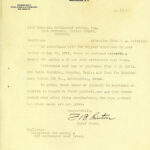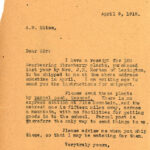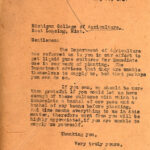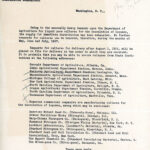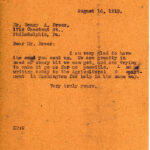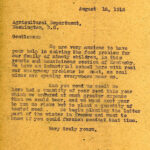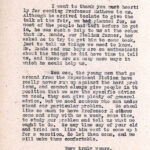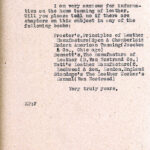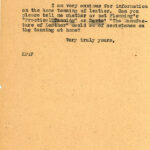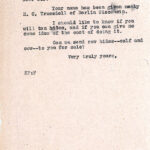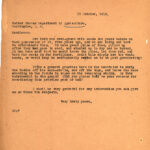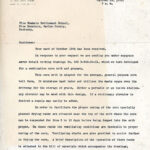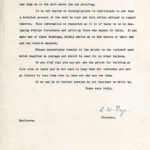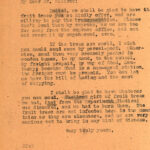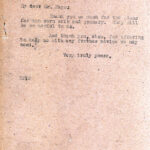Pine Mountain Settlement School
Series 11: FARM
Agricultural Correspondence 1917-1918
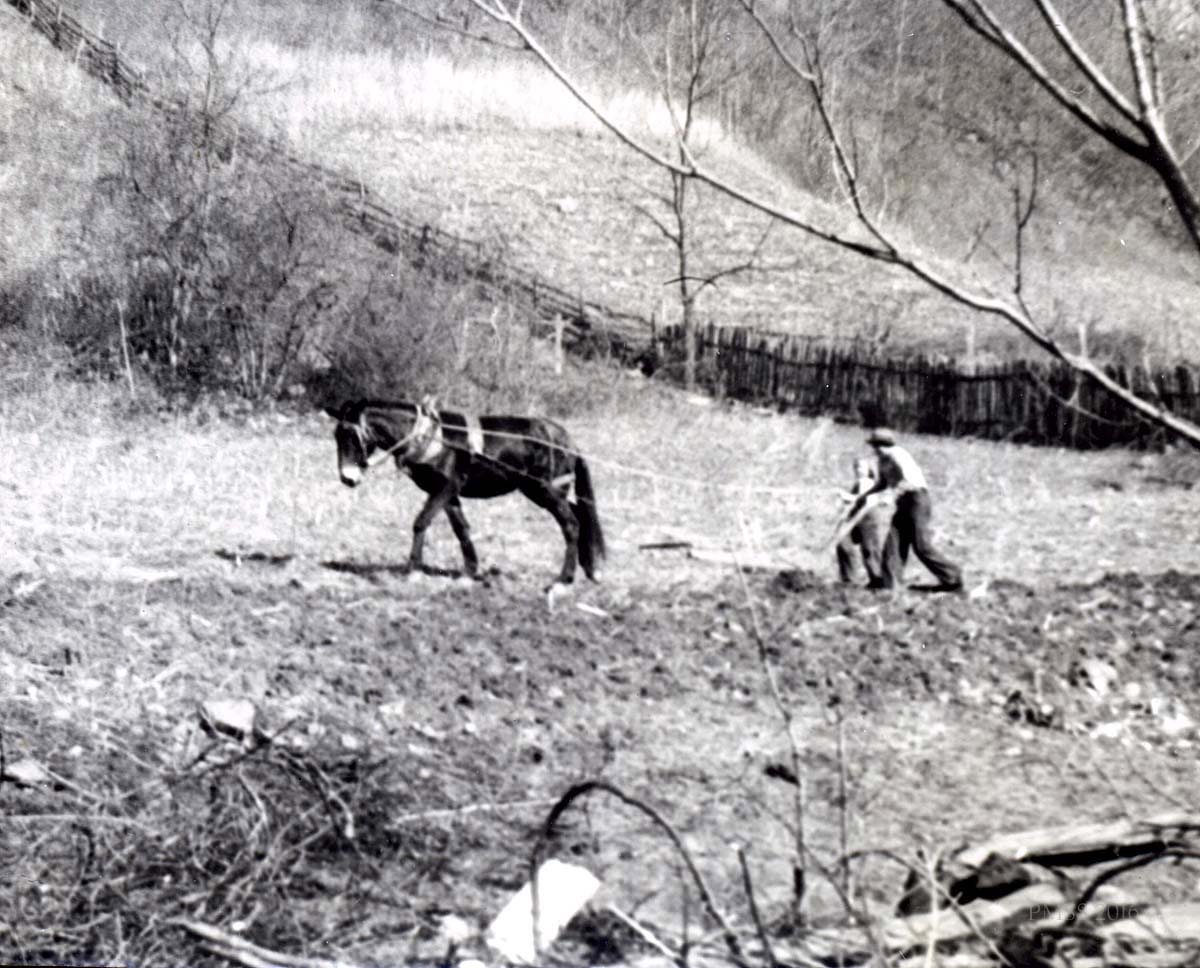
Farmers and Mule. Series VII-52 Children & Classes. [elem_006.jpg]
TAGS: farm, farming, farmers, land use, mules, cultivation, farm equipment, plant disease, legume disease, fruit tree disease, agricultural training, U.S. Department of Agriculture, F.B. Linton, strawberry plants, cowpeas, soybeans, Tennessee Department of Agriculture, food supply, food insufficiency, Dr. Thomas J. Cooper, leather tanning, composting practice
Agricultural Correspondence 1917-1918
This correspondence related to the farm and farming at Pine Mountain Settlement School in 1917-1918 is largely that of Katherine Pettit, co-founder of Pine Mountain Settlement School. The letters give insight into the operation of the farm during the very early Boarding School years and the problems and needs that arose.
CONTENTS: FARM Agricultural Correspondence 1917-1918

Barn, corn crib painted with Spring green. Photo by HHW. [P1130882.jpg]
[Note: Letters from PMSS staff in the PMSS Collections are carbon copies, typewritten, unsigned, and meant for the Office files. The original signed copies were sent to the correspondents. The initials at the bottom left of most PMSS letters indicate the writer (along with initials of the secretary). For example, “EZ” are the initials for Ethel de Long Zande and “KP” refers to Katherine Pettit. The following list of contents is in order of the image numbers.]
- June 13, 1917. F.B. Linton, U.S. Department of Agriculture, responds to Pine Mountain’s request for a recipe for making 20 percent cottonseed meal bread. Linton provides an address for the purchase of cottonseed meal from J.D. Falls in Memphis, TN.
[Cottonseed is full of protein but toxic to humans and most animals. The U.S. Department of Agriculture this week approved a genetically engineered cotton with edible seeds.Oct 17, 2018.] - April 8, 1918. Katherine Pettit to Professor Phillips, Dept. of Agriculture, Lincoln Memorial University, Harrogate, TN. Thanks him for his visit to PMSS and consultation.
- April 9, 1918. Katherine Pettit to A.W. Bliss to arrange for shipment of 100 Everbearing Strawberry plants to PMSS by parcel post insured.
- May 30, 1918. Katherine Pettit [?] to Michigan College of Agriculture, East Lansing, Mich. regarding “liquid pure cultures for immediate use in our work of planting.” Her request was denied and she asks for other sources. The culture is to be used to inoculate a bushel of cowpeas and a bushel of soybeans before planting. The letter also sent to the North Carolina Dept of Agriculture, Raleigh, and the Tennessee Dept. of Agriculture, Nashville, Tenn.
- [May] 1917. H. Kellerman, U.S. Dept of Agriculture, Washington, D.C., Bureau of Plant Industry to PMSS. Regarding a request for inoculated cultures for legumes. Washington notes that “No further requests for cultures can be honored … during the months of May, June, and July 1917.” Provides list of other procurement agencies.
- August 16, 1918. Katherine Pettit to Henry A. Dreer, Philadelphia, PA, thanking him for the seed sent to the School.
- August 16, 1918. Katherine Pettit to the Agricultural Department, Washington, D.C. requesting assistance with “real war emergency problems” with food supply for the children of the School “…as coal mines are opening everywhere near us.” She asks for “tested” seed to be planted in late winter in the School’s frames.
- October 3, 1918. Response from the United States Dept. of Agriculture, Bureau of Chemistry regarding Pettit’s request for information on the home tanning of leather. List of books on the subject.
- October 9, 1918. Katherine Pettit to Dr. Thomas J. Cooper, Dean, Agricultural Experiment Station, KY. Thanks Cooper for sending Prof. Mathews to PMSS, who arrived too late to speak at the Community Fair of 1918. Notes that Mr. [Luigi] Zande, “our Italian farmer,” wants him to come again. Pettit notes that the young men from the Experiment Station cannot cope with “hard problems” in farming such as that at PMSS. She invites Prof. Mathews to come and stay a week at the school to discuss problems on the PMSS farm.
- October 10, 1918. Katherine Pettit to Charles P. Lauriat & Son, Boston, MA requesting information on the home tanning of leather from specific books.
- October 10, 1918. Katherine Pettit to Messrs. H.C. Baird & Company requesting that they consult Flemmings, Practice Tanning, and Davis, The Manufacture of Leather, to see if either will be of assistance to home tanning instruction.
- October 10, 1918. Katherine Pettit to J.C. Faulkner, Barbourville, KY, asking if his company will tan hides, if he will supply cost information, and if they will take raw hides (calf and cow) for sale?
- October 11, 1918. Katherine Pettit to U.S. Dept. of Agriculture regarding weed problem on the PMSS farm. She notes that the weeds are being pulled, stacked until dry, and burned at PMSS. Requests information regarding letting the weeds rot, and using for fertilizer. She wants to know if weed seed will again germinate. She describes mountain practice of leaving fodder stalks and corn to ripen in fields after stripping of tops and leaves. She wants to know if the practice is good or bad.
- October 29, 1919. L.W. Page, United States Dept. of Agriculture, Office of Public Roads and Rural Engineering. Page says that drawings are being sent for combination corn crib and granary (working drawings No. 686 D-949-50-51). Description of the crib is given as well as instruction for filling the crib so it will be rat-proof. Washington asks for feed-back.
- Page 2 of above.
- October 30, 1918. Katherine Pettit to L.M. Schindler, Agricultural Engineering Department, Univ. of Wisconsin, Madison. She notes the “plans have come (hog-house) and I am well pleased…” and she thanks him for his assistance.
- November 11, 1918. Katherine Pettit to Morris Elliott, Horticultural Department, State University, Lexington, KY. Pettit accepts the fruit trees from Elliot and offers to pay the freight for shipping and advises that they should not be sent express, as no office nearby can accommodate express shipping. She suggests parcel post for small trees — packed in wooden boxes. The last group of trees (gift) she notes were diseased and they had to burn them. She notes that the fruit trees in the mountains are not as infected as other locations and she does not want to introduce disease.
- November 13, 1918. Katherine Pettit to L.W. Page, Director, U.S. Dept of Agriculture Office, Washington, DC. Pettit thanks Page for his plans for the corn crib and granary and offer for further advice.
- November 20, 1918. Katherine Pettit to Morris [?] Elliott, Horticultural Dept. State University, Lexington, Ky. Pettit thanks him for “…letting us have as many trees as we want.” She requests 100 and hopes he will send them right away. “Have you any cherry and plum trees?” she asks.
See Also:
FARM Agricultural Correspondence 1919-1920
FARM and FARMING
FARM and FARMING Guide
FARM History 1914 -1918
WELLS RECORD 08 PMSS Farm Dairy Poultry
- 01 farm_1918_agriculture_corresp_001
- 02 farm_1918_agriculture_corresp_002
- 003 farm_1918_agriculture_corresp_003
- 04 farm_1918_agriculture_corresp_002
- 005 farm_1918_agriculture_corresp_005
- 006 farm_1918_agriculture_corresp_06
- 07 farm_1918_agriculture_corresp_007
- 08 farm_1918_agriculture_corresp_008
- 009 farm_1918_agriculture_corresp_009
- 010 farm_1918_agriculture_corresp_0010
- 011 farm_1918_agriculture_corresp_011
- 012 farm_1918_agriculture_corresp_012
- 013 farm_1918_agriculture_corresp_002
- 14 farm_1918_agriculture_corresp_014
- 015 farm_1918_agriculture_corresp_015
- 16 farm_1918_agriculture_corresp_016
- 17 farm_1918_agriculture_corresp_017
- 018 farm_1918_agriculture_corresp_018
- 019 farm_1918_agriculture_corresp_019

